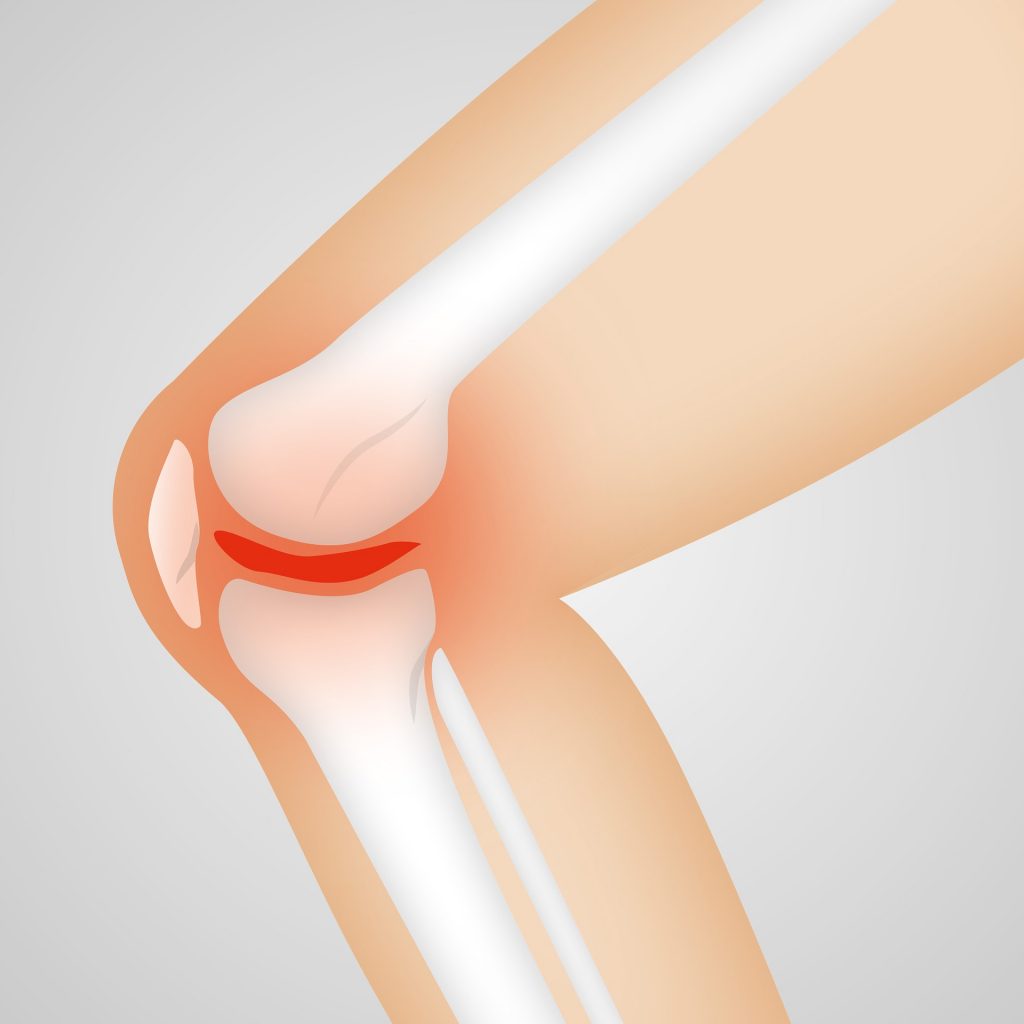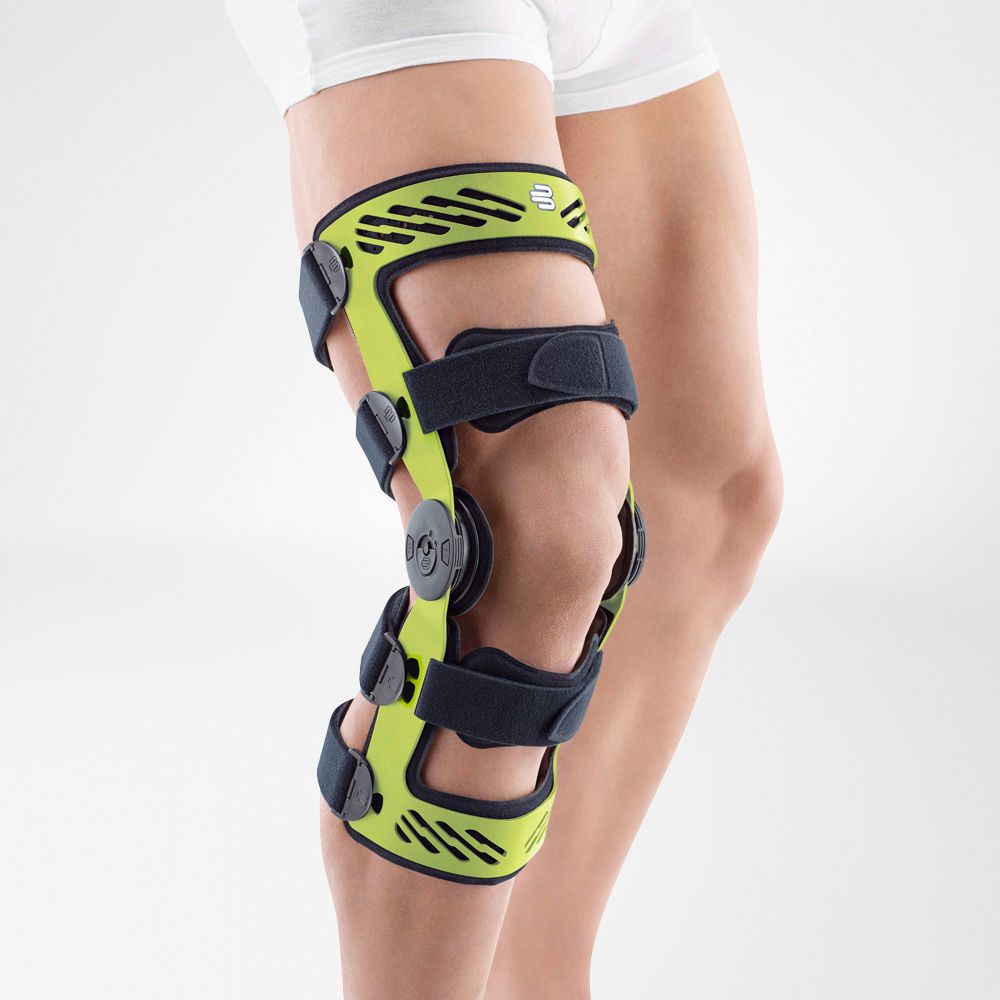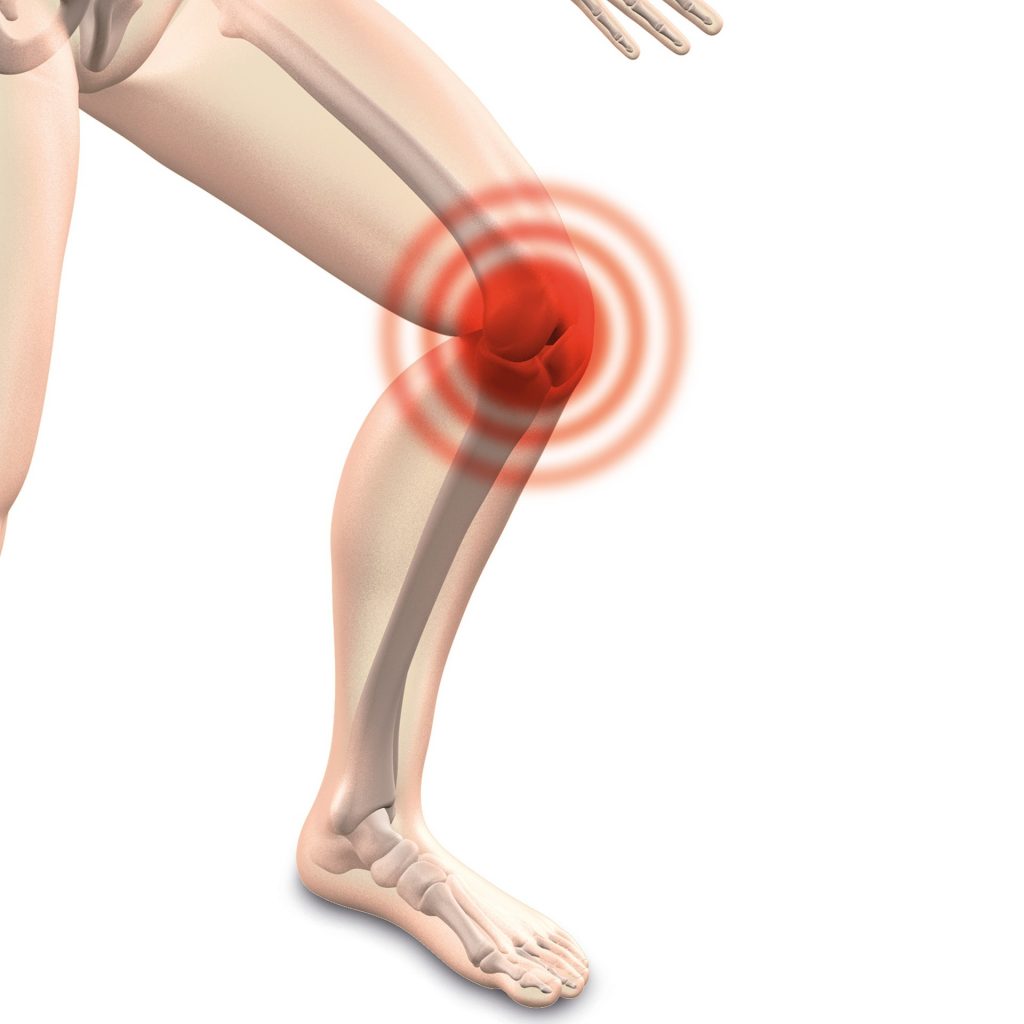Many people may experience swelling around the knee as a result of their meniscus surgery. While this can be concerning, swelling can also be a normal part of the healing process. It is important to understand swelling, how to reduce swelling and when to recognize if it is problematic after meniscus repair surgery.
People in need of knee meniscus surgery are likely people who have a torn or ruptured meniscus. This article serves to provide information on torn meniscus, meniscus surgery and knee swelling–a common complaint after knee meniscus surgery.
Definition: What is a torn meniscus?
Menisci are located in some joints, disc shaped, and made of slippery, fibrous, cartilaginous material. Menisci help to provide shock absorption and reduce friction between joints. In the knee joint there are two: a medial meniscus and a lateral meniscus.

When a person falls or twists forcefully with weight distributed awkwardly in the knee or leg, the meniscus can tear or rupture. A meniscus may also sustain injury from long term malalignment of the knee or due to weakness from aging.
A meniscus that goes un-repaired can cause long term damage to other cartilage in the knee joint which if left untreated can lead to osteoarthritis of the knee. If you or someone you know thinks they may have a torn meniscus it is important to seek medical treatment and consider a meniscus repair surgery.
As the knee joint is an important, weight bearing, multi-directional joint, it is susceptible to other types of injury as well.
Other Types of Knee Injuries or Disorders
- Bone fracture (Patella, Femur, Tibia, Fibula)
- Bursitis
- Dislocation
- Malalignment (Genu Valgum, Genu Varus)
- Osteoarthritis
- Pain
- Tendonitis
- Torn Ligaments
- Torn Meniscus
- Torn Tendons
A doctor or other medical professional may indicate that you have a torn meniscus and give you more information on a treatment process. One treatment option may be arthroscopic surgery to repair the torn meniscus.
Treatment: Torn Meniscus
How do I know if meniscus surgery is right for me?
The severity and location of the tear or injury on the meniscus will help to determine the need for surgical repair. If the tear is located in a place on the disc with minimal friction, for example, it may be able to heal itself. Likewise, if the tear is on the surface of the meniscus it may be able to heal itself. On the contrary, a deep or complete tear will likely be unable to repair itself and will need surgical repair.
It is important to seek care immediately if you suspect meniscus injury. In come cases, surgery may not be indicated if the meniscus tear is too old. It is preferable to do surgery on a tear that is less than 12 weeks old.
In addition to location, severity and duration of injury, the type of tear also influences the need for surgical repair. Horizontal meniscal tears are more difficult to repair, while vertical tears facilitate surgical repair.
If for some reason the doctor is unable to completely repair a meniscus, they may be able to conduct a partial repair or partial extraction of the damaged meniscal tissue which can still be highly effective in the recovery of a torn meniscus.
Other Types of Knee Surgery Include:
Other types of knee injury will require other types of surgery.
- Arthroscopy
- Open Knee Surgery
- ACL Reconstruction Surgery
- Meniscectomy/Meniscus Repair
- Meniscus Transplant
- Microfracture Knee Surgery
- Release Surgery (Patella release)
- Tendon Repair
- Partial or Total Knee Replacement
- Plica Excision or Removal
How to prepare for knee meniscus surgery
Type of Procedure:
The most common procedure type for meniscus surgery is called arthroscopy. Essentially this is a procedure where a scope is inserted through the skin with a light and a camera on the end. This allows the physician to view the joint and affected meniscus without making a large skin incision. The doctor can then insert tools under the skin and perform the meniscus repair in this way.
How long does meniscus repair surgery take?
A knee arthroscopy to repair a torn meniscus may take from 30 minutes up to an hour. Typically patients are released home the same day after meeting a few requirements set by the medical team. Requirements may include ability to walk around with crutches, urinate, and keep fluids down.
Will there be a scar?
Scarring is minimal with arthroscopic meniscus repair as the skin is left relatively intact. Arthroscopic surgery usually results in a few puncture marks as opposed to a long incision mark. Arthroscopy involves inserting a scope with light and camera on the end inside a puncture wound and the tools required for surgery through another one-several puncture wounds around the knee.
If you have questions regarding the exact type of scar resulting from meniscus repair surgery ask your surgeon prior to the procedure.
Questions About Recovery:
How long is recovery for meniscus surgery?
Recovery time depends on the severity of the meniscus injury and type of repair that was done–whether it was full or partial. Generally, for about four weeks (or less, or more) after surgery patients will use crutches to keep weight off of the affected side. Some medical professionals may also require the use of a stabilizing device such as wearing either a cast or brace for the first few weeks after surgery.
If the meniscus was only partially injured and partially repaired, recovery time will be shorter–perhaps within one month. If the whole meniscus was damaged and repaired, recovery time is expected to be longer–such as up to three months.
Will I need to take medications?
Ask your doctor what medications they recommend for you to take during your recovery. Likely they will prescribe a pain medication, an antibiotic (to prevent infection), an anti-inflammatory (to reduce swelling). They may also recommend the use of compression stockings or give you a medication to prevent blood clots.
Will I need to have physical or rehabilitation therapy?
Physical therapy is definitely recommended after meniscus surgery. It is of course highly recommended that you consult with your doctor, surgeon, or physical therapist before tying any exercises on your own. Some physicians will recommend non-weight bearing activities for a long time and others may want you to start trying weight-bearing activities sooner in your recovery. Always consult your physician first and follow their instructions.
Strength building exercises and other physical rehabilitation therapies can be a vital part of the recovery and can help to reduce popping sounds.
Will there be weight bearing restrictions?
Your surgeon, doctor, orthopedic, or physical therapist will give you individualized instructions on weight bearing restrictions. Persons recovering from meniscus surgery will be asked to restrict the weight bore onto the affected knee for a certain period of time following their surgery.
These restrictions may range from:
- Non-weight bearing (NWB)
- Toe-touch weight bearing or Touch-down weight bearing (TTWB or TDWB)
- Weight bearing as tolerated (WBAT)
- Full weight bearing (FWB)

Depending on the restrictions the person will be provided with assistive devices to facilitate movement such as crutches. Typically people recovering from meniscus repair surgery use crutches for 3-4 weeks following surgery.
What kind of complications may occur after surgery?
Although complications are rare and the surgery is considered low-risk, the following list are possible complications of having meniscus surgery.
- Damage to skin nerves
- Infection
- Knee pain and/or stiffness
- Other complications of surgery: blood clots, blood loss, infection
Other common questions and complaints of the knee after meniscus surgery are the following:
- Knee pain after meniscus surgery
- Knee popping after meniscus surgery
- Knee swelling after meniscus surgery
Knee swelling after surgery
What causes knee swelling?
Swelling is a part of the healing process after surgeries such as meniscus repair. Swelling indicates the presence of fluid and white blood cells to an area that is inflamed. The white blood cell presence is necessary to help ward off infection in the affected area.
Causes of swelling can be the following:
- Trauma from surgery
- Body’s normal response to inflammation
- Loose fragments of cartilage
- Degenerative knee changes
Prevention

How to prevent, reduce or minimize knee swelling?
Many people are familiar with the acronym RICE: signifying rest, ice, compression and elevation to help reduce and minimize swelling. This is also helpful to remember when thinking of preventing excessive knee swelling after meniscus surgery.
After surgery the knee is typically wrapped with a bandage–this is to both protect the knee but also serves to help reduce and prevent excessive swelling. If you have knee swelling further out in the recovery period consider asking your physician about using a wrap at home to gently compress the area.
Ice is often used to reduce swelling and pain after knee meniscus repair. When icing the affected area it is important to remember to keep a cloth of some sort between the ice pack and the skin and not to ice for more than 20-30 minutes at a time.
Resting and elevating the knee above the level of the heart with a few pillows can help to increase circulation which helps to prevent, reduce and minimize swelling. Lay with your back flat on a bed or couch and elevate the foot/lower leg with a few pillows until the knee is above the level of your heart.
A good way to also provide rest to your healing knee and meniscus is to follow your doctor’s recommendations on weight bearing restrictions.
Recognizing a problem with swelling:
If there seems to be a sudden increase in swelling or a spreading of the swelling to other extremities, arms, or face contact your physician immediately.
If you have difficulty breathing seek urgent medical attention.
If you notice redness, itching, pus from the wound and/or a foul odor from the wound site contact your physician immediately.
If you have fever higher than 100.4℉ or 38℃ contact your physician.
Knee popping after meniscus surgery
Many people experience knee popping or other cracking sounds as a result of their meniscus surgery. While this can be uncomfortable and irritating, knee popping is fairly common and normal. Read our article on knee popping after meniscus surgery for more information.
Knee pain after meniscus surgery
Many people also experience knee pain after their meniscus repair surgery. Read our article on knee pain for more information.